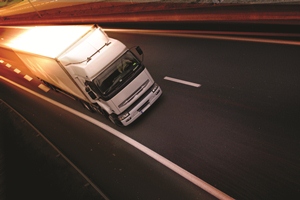A large automotive company needed to combine sensor and operational data to deliver compelling offers, better customer service and greater profitability. The company manufactures trucks, buses and construction equipment. Rob Mellor, VP & GM EMEA, WhereScape talks to the company about their journey.
What changes in the truck industry prompted your data strategy?
It is at a similar point to where the car industry was in the 1990’s; competition is tough, margins are extremely tight and profit is primarily made through add-on sales. For the car industry add-on sales were parts; for the truck industry it is offers for warranties, financing, servicing and insurance. The major challenge for all truck companies is how to create compelling offers that are significantly better than those offered of competitors. Our response has been to introduce sensors to our trucks; we believe by understanding vehicle activity we can create much more relevant offers.
How has truck sensor data become core to your business?
It enables us to understand every aspect of each individual truck. We can monitor components, precisely where it has been driven, how fast it was going and how aggressively it was driven. Sensor data combined with operational data (such as make, model and service history) allows us to build a detailed profile. By using the right information management tools, we produce offers that have a high statistical chance of being profitable.
For example, we buy back trucks after leasing contracts have expired and analyse the potential value based on the sensor data. A truck that has been driven through the Australian outback is not going to have the same life expectancy as that of a truck which has been driven on European highways. So, rather than selling both trucks based on mileage, we can sell them based on their life expectancy. This enables us to achieve a much higher margin on the truck with a higher life expectancy, as much as 5%, which equates to millions of euros a year. That makes a huge difference to profitability.
Sensor data analysis means we know a certain part is at risk after say 100,000 km and a particular truck is being driven in harsh conditions, we can predict when servicing will be required. We advise the customer to take the truck for servicing. This kind of insight allows us to offer fixed price service contracts with the guarantee that there will be no breakdowns.
People buying trucks are interested in fuel consumption of their fleets. Using sensor data, we can calculate average fuel consumption by truck, journey and even by driver. Having this information and being able to act upon it – by finding more economical routes or educating drivers – can equate to significant savings for fleet owners.
Does using sensor data pose a big technological challenge to the organisation?
It completely changes the game. Sensor data on its own is of no value; we have to be able to analyse it against operational data – providing context by linking with its servicing history.
These two data types are completely different; sensor data is high volume, low complexity and operational data is low volume, high complexity. How these two data types fit together and managing them in a fully integrated Enterprise Data Warehouse (EDW) is just the start of the challenge. Sensors create data sets that are large and complex so it’s difficult to process them using traditional data processing.
We needed a faster, more agile approach to capturing, processing and analysing this data to support the business strategy. We are also integrating many other types of data to improve profitability; for example, unstructured data such as weather, traffic and strike information.
How have you overcome these challenges?
With WhereScape we have an agile analysis and data management strategy. They automate the planning and building of data into our IBM Netezza Enterprise Data Warehouse (EDW), 10 times faster than traditional methods. WhereScape is enabling us to get value from the sensor data and shorten times to market; we are able to deliver our BI solutions faster than ever before.

WhereScape is also helping us with the integration of all of our information management systems. We needed to move from independent data marts with their own modelling techniques to a fully integrated EDW with a single global modelling standard. We have gone from an ad hoc technical approach to a model-driven approach.
The main IT benefits of using WhereScape are data consistency and the integrity of our entire data environment – we have five sites working on the same EDW. System maintenance changes are much quicker and more straightforward.
We have created a new centralised information management environment which gives us a 360° cross-functional view of our data, based on a single modelling method. EDW is our first concrete step in managing big data. We will be able to respond to new demands of mixing data from the different businesses with larger volumes, close to real- time response as well as better traceability and reusability.
WhereScape is central to our future and I look forward to working with them for many years to come.
The author of this blog is Rob Mellor, VP & GM EMEA of WhereScape
Comment on this article below or via Twitter: @IoTNow OR @jcIoTnow










